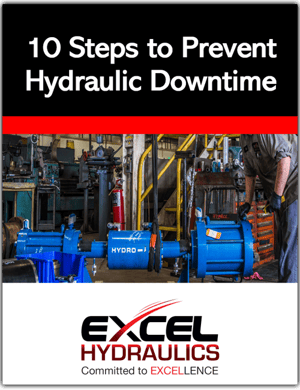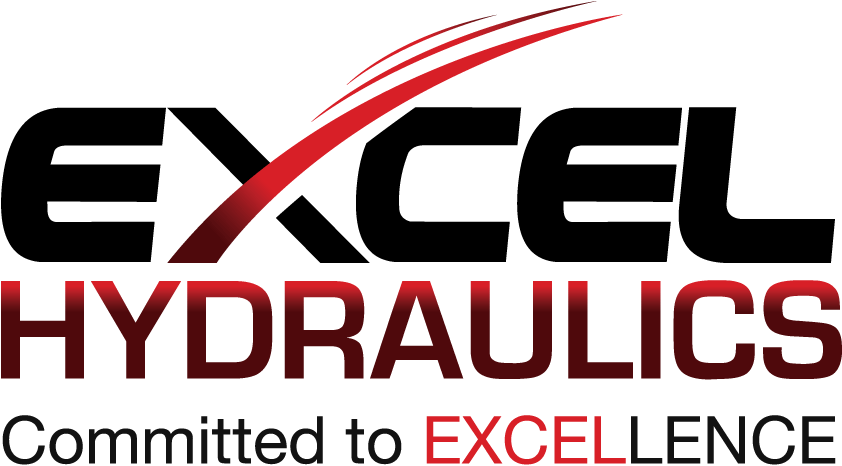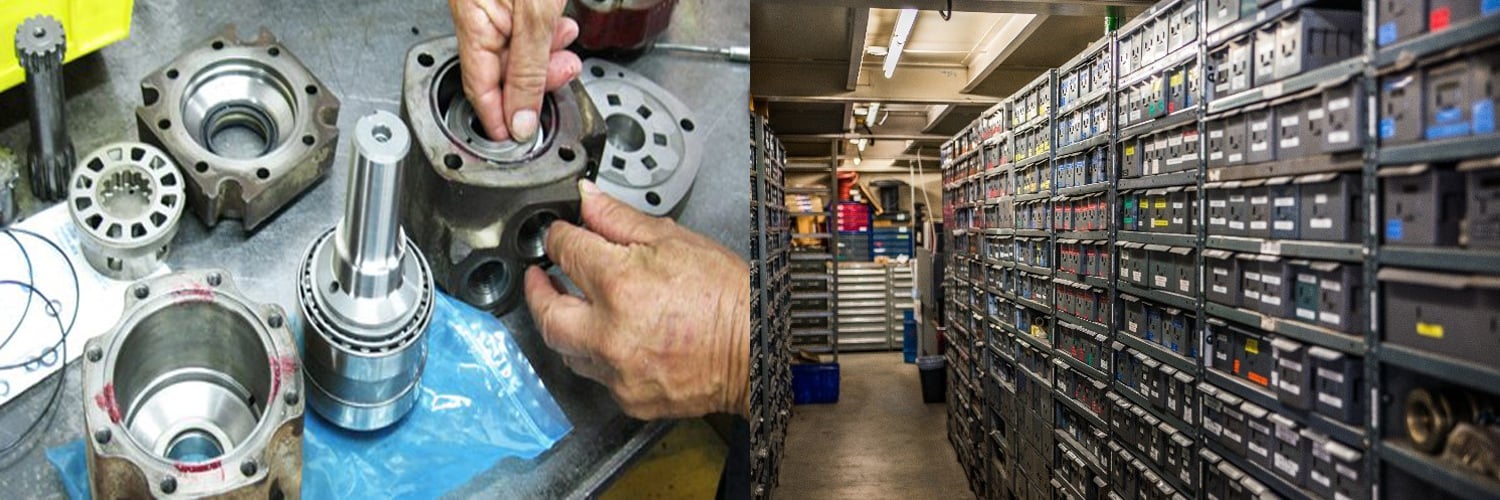It's time to go to work...you fire up your machine and BAM! It shuts down...now what?
Do you have extra parts laying around to fix your hydraulic equipment right away? An inventory of spare hydraulic parts should play a significant role in your proactive maintenance plan. So ask yourself, do you really have a defined parts storage process? If you're like most people using hydraulic equipment on a regular basis, you probably don't keep a ton of extra hydraulic parts on hand...but maybe you should!
Did you ever wonder how important it is to stock spare hydraulic parts?
One of the most challenging components of developing a parts storage process is identifying the perfect balance between having enough parts on hand while also not having too many.
But where should you start?
If you start by analyzing your historical data of parts usage, identifying key components, and knowing your space constraints, you will be better able to forecast and identify what type of parts, how many parts and how often you should be stocking spare parts. Maybe this sounds challenging and you don't have the time to focus on creating a parts storage process, we have a solution for you! Here are 4 steps to create an effective parts storage process...
Identify! Prioritize! Maintain! Eliminate!
Now that sounds easy...doesn't it? Actually, it is! With a little planning and a few hours to organize your processes, you can build a parts storage process that will keep your hydraulic equipment running, your business producing whatever it is you produce and those stressful headaches to a minimum...
STEP 1: Identify Critical Spares
Critical spare parts can be identified as components that keep major machinery running. If this equipment were to fail, it would decrease or stop production and cause harm to the business.
Depending on the company and the machinery within, critical spare parts may range from extra cylinders to pumps and motors, to the smallest seals and even o-rings. If you have a piece of machinery that could potentially go down and would slow down or stop production, we recommend having replacement parts kept on-hand of this piece of hydraulic equipment.
With a proactive maintenance plan your spare hydraulic parts should not be used too frequently (in theory)...
However, we all know on any given day, at any given time, for any given reason, unforeseen circumstances can and will happen. Why not be prepared!?! Analyzing previous years’ maintenance plans and former repairs will provide a clear visual of what spare items should be on your shelf. Historical data can help you forecast what items will be most beneficial to have on hand or have repaired as a spare. It is often more cost effective to repair old hydraulic parts than it would be to buy new, especially for a spare!
Depending on the lead time of your components here are a few recommended spare parts to stock:
- BELTS
- PUMPS
- HOSES
- VALVES
- FILTERS
- GASKETS
- CYLINDERS
- ACTUATORS
- FAN MOTORS
- THERMOCOUPLES
- SEALS and O-RINGS
- CUSTOMER COMPONENTS
STEP 2: Prioritize Your Spare Parts
It is important to first prioritize what spare parts are most beneficial and economical to have in stock. To do so, you need a good understanding of the most frequently used parts. To do this, you'll quickly discover that one of your greatest resources is data!
Review Historical Data - you should be reviewing PY maintenance records, inventory adjustments, purchase orders, downtime logs, etc… so you can make informed decisions about what spare parts take precedence. Also, don’t be afraid to have open discussions with maintenance teams and purchasing agents.
Combining expert recommendations with historical data to make the most informed decisions will keep costs low and productivity high!
A helpful tool when prioritizing your assets could be a CMMS (Computerized Maintenance Management System). An automated software system the tracks parts & inventory and is automatically updated according to work orders is worth the investment. Efficient record keeping will streamline your ability to first identify, then prioritize your spare parts needs. Within most CMMS systems you can customize specific reporting needs to see particular diagrams, assets and part locations. An automated system will allow technicians to prioritize and focus more on maintenance, less on paperwork. Now that's a good thing!
STEP 3: Maintain Your Inventory
There is no perfect formula to maintain a perfect inventory because of the many unforeseen circumstances that come with maintenance and repairs. However, there are guidelines that can be followed to prevent loss and provide a calculated amount of spare parts to be added to inventory while preventing waste.
The EOQ Formula (Economic Order Quantity) can be used to determine the most economical quantity of parts to order annually:

For more information on the EOQ Formula, please visit:
https://www.softwareadvice.com/resources/optimize-inventory-control-system/
Here are some sample numbers for you to consider:
Annual Demand: 500 units
Order Cost: $60
Holding Cost: $1.50 per unit
Calculated Order Amount= 200 units
Maintaining a spare parts inventory also involves partnering with dependable vendors. It is important to have an honest and trustworthy vendor/customer relationship. Vendors should understand the needs and expectations of your business. You should set your pricing and shipping expectations up front, during your initial conversations and don’t be afraid to negotiate!
Be sure to designate time annually to discuss changes to your processes and request documentation of any changes to their vendor pricing. Some vendors offer VMI (vendor managed inventory) systems. This may not work for all companies but if formulated and managed correctly, it can be a significant time saver; and a great resource for protecting company assets!
STEP 4: Eliminate Excessive Costs, Downtime & Parts
A well-constructed and properly managed spare parts inventory will allow you to eliminate excessive costs, long period of downtime, obsolete parts in your inventory and frees up much needed space!
You should focus on eliminating excessive costs for your organization. If you have spare parts on hand, the need for rush order parts and over inflated shipping costs will be eliminated.
You should try to eliminate long periods of downtime. Having critical spare parts on hand can make the difference between long downtime and lost production to same day turnaround and functionality.
Implementing a few inventory "best practices" should also help you eliminate obsolete parts in your inventory. These "best practices" could also help free up space, inventory and possibly make a profit. Try selling obsolete parts to customers, vendors or online buyers.
One person’s trash is another person’s treasure!
You never know who might be looking for what you view as obsolete or obscure. Why discard parts when there’s potential to make money that can be invested in other assets within the company.
Additionally, you may see your purchasing costs go down. With a proper inventory management system in place, you are more likely to buy in bulk more often instead of on an "as needed" basis. A proper inventory management system will help eliminating unnecessary costs and increasing productivity!
Are you looking for additional help with preventing hydraulic downtime? Consider downloading a copy of our popular eBook "10 Steps to Prevent Hydraulic Downtime" below...you'll be glad you did!
Download Your Copy of our 10 Steps to Prevent Hydraulic Downtime eBook Here...
 |
If you have additional questions about your options for stocking spare hydraulic parts, pick up the phone and give us a call at 856-241-1145, we can create a plan just for you!

